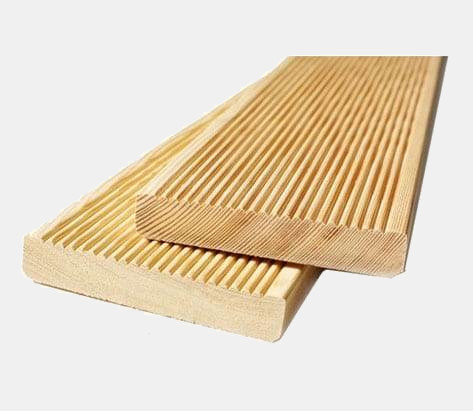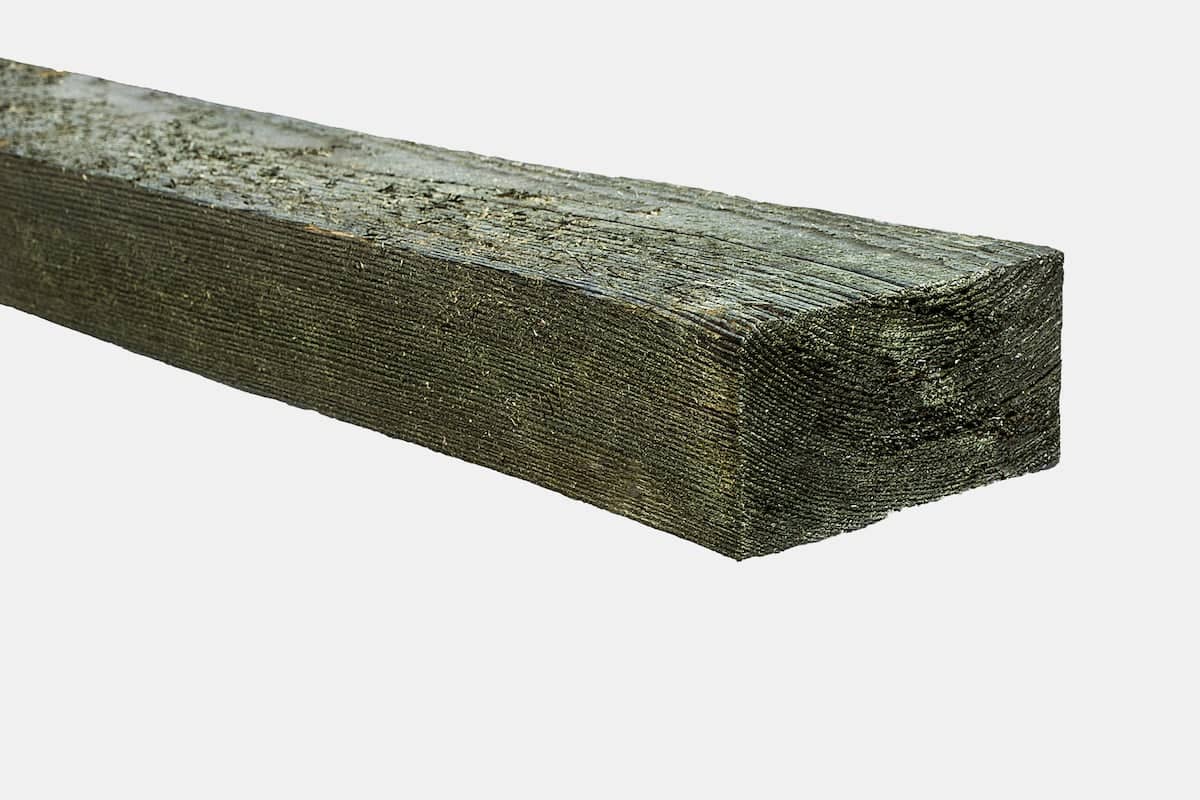Decking
Information is being prepared

Information is being prepared

Information is being prepared

Terraces, fences, playgrounds, ladders, wooden tables and chairs, claddings, tiling and other timber products are used for our needs and to create beautiful surroundings. Timber products are valued, it is desired to preserve them and to keep them in a best possible condition, but due to weather conditions and due to contact with the ground these wishes are often not meant to come true.
However, there is a certain way, which will ensure the longevity of timber products. If You want long serving timber products you need pressure impregnated timber.
Timber can be impregnated easily at home, but the impregnation liquid will not penetrate through the entire timber. In order for timber to have very high resistance to humidity, fungi, sunlight, rot and termites, timber impregnated by pressure treatment should be bought.
Pressure treatment is carried out with Tanalith E preservative, which contains copper and organic biocides. This impregnator is applied in highpressure industrial process, in which timber gains natural light green tint. Over time the timber changes color and becomes honey-brown color, until finally it becomes naturally grayish in color.
Tanalith E ensures, that timber acquires high resistance to humidity, sunlight, rot and bacteria. This preservative is used worldwide for about 20 years, so it has proved its effectiveness, longevity and benefits. It is important to mention that described preservative complies with EU directive no. 2006/139/EC. This means that it does not contain any forbidden compounds (of chromium, copper, arsenic), and that it meets the environmental and health requirements.
So, if You are considering wooden fence, terrace, playground or other wooden object installation in the open air, it would be best to use pressure treated timber. Timber impregnated by pressure treatment will ensure You the quality and You will be guaranteed, that You will be able to enjoy Your constructed wooden product for many years.


1.Timber is placed in a chamber and all the air is pumped out. This vacuum draws water out of the timber cells.

2.Chamber is flooded with solution of Tanalith E.

3.Pressure is applied to force solution into timber.

4.Excess solution is pumped out of chamber. Wood is kept under low pressure in a vacuum.

5.When chamber is opened to atmospheric pressure, the final surface layer of Tanalith E is forced into the wood.Impregnated wood is kept stored until fully dried.
CONSTRUCTION. Wooden parts of the foundation, floor support beams, floors, wall frames, beams, roof beams and boards, timber used in house exterior, claddings, wooden tiles, other timber used in commercial and private buildings.
VILLAS AND COUNTRY HOUSES. Terraces, fences for flowers, playgrounds, ladders, fences for lawn edges, fences, benches and picnic tables, signs, boxes and so on.
AGRICULTURE. Tree supports, grape trellis. Poles, fences, etc. Round, square planed or square fence poles, gates and gate posts, fencing timber.
TRANSPORTATION. Timber for ship construction, flooring and other transportation timber, supports and floors of containers, packaging, cable reels and their covers.
ENGINEERING. Electric poles, platforms, bridges and bridge pavements, cable supports, sound fencers/barriers.
Pressure treatment process
| 1. Timber is placed in a chamber and all the air is pumped out. This vacuum draws water out of the timber cells. |
| 2. Chamber is flooded with solution of Tanalith E. |
| 3. Pressure is applied to force solution into timber. |
| 4. Excess solution is pumped out of chamber. Wood is kept under low pressure in a vacuum. |
| 5. When chamber is opened to atmospheric pressure, the final surface layer of Tanalith E is forced into the wood.Impregnated wood is kept stored until fully dried |
Both at home and in other life situations we use products from timber. We encounter them every day, they are ordinary part of our lives and on rare occasions someone thinks about their production method seriously. However, there is a long process until the tree turns into a specific product. Usually one of the steps in the process is planing.
Since the Iron Age the plane was already being used. This tool has been especially popular amongst carpenters and joiners, who used it to even out wooden surfaces. Nowadays planes are encountered very rarely, and planing are usually mechanized.
What is timber planing? It is a process by which timber is processed. In most cases this treatment is carried out with a help of special machine-tool. Timber which is planed has smooth surface, it is soft and easy to clean and maintain. Timber texture particularly highlights if the planed surface is painted.
Taking into account that the texture of planed timber highlights if painted, the timber for planing is selected very carefully and responsibly. Because of modern technology timber is planed very evenly and neatly. Usually softwood is selected for planing. Such timber is characterized by lightness, softness, and is processed easily. Probably the most valued is planed pine timber. This type of timber is characterized by its insensitivity to humidity, flexibility and it is easy to plane. Pine doesn’t branch out too much, therefore its timber has a fine texture. This type of timber is also chosen because it is highly resinous. High concentration of resin leads to timber’s longevity.
Planed timber is usually used for flooring, stairs, fencing, girders and cladding. Due to highlighted timber texture such timber can often be used to create various interior features.
The only disadvantage of planed timber is that paint penetrates very hard into smooth and soft surface. Due to this reason painted planed surfaces serves for shorter period of time. However, in order to paint not planed timber surface, it would take much more paint compared to planed, because this kind of surface absorbs dye very well.
What to choose – planed or not planed timber? It depends on the individual needs. The essential difference is that planed timber is ready for use and does not require any more special treatment.

Although technology and science are very advanced these days, timber is still used for construction needs, and there is no other discovered material which could replace it.
Construction timber is typically made from fir and pine. Timber made out of these woods is distinguished by its softness, lightness, and it is easily processed. Pine timber is characterized by its flexibility, resistance to humidity, and fir timber is a little more difficult to plane. Fir and spruce timber’s special feature is that it shrinks very little when dried.
Pine timber is used for both – internal and external building works. In most cases this type of timber is used for decoration, roofing, railings, floors, ceilings, doors and windows. Impregnated pine timber can be used for decking, wall cladding and for other purposes. Pine timber also contains essential oils. These oils emit aromas which can create very pleasant smell, which ensures fresh microclimate.
Fir timber is more suitable for various constructions. Small fir branches provides resistance to breaking, so this timber is particularly suitable for the construction of the roof.
Timber, intended for construction, can be dried or not dried. Most of the time, dried timber is used for construction, which can withstand high loads, is more durable, more stable and is resistant to decay. It is less likely that such timber will shrink or deform. So when choosing timber it is important to note what is the humidity of it.
What kind of timber products can be considered as construction timber? These are rafters, beams, girders, various boards and so on. To make the construction timber serve longer and more reliably it is recommended to apply pressure treatment to it. Timber impregnated by pressure treatment will be resistant to rot, bacteria, fungi and it won’t be attacked by a variety of insects and rodents.
It appears, that not all types of wood are suitable for construction. While selecting suitable timber it is essential to take into account its features (hardness, density, texture). If suitable timber is selected Your construction will be more durable, safer and it will ensure its longevity.

More and more people are playing at https://gwcasino.bet because to its extensive selection of games, variety of banking options, and top-notch support staff. The reliability of the site boosts its appeal as a gaming venue, and it continues to draw active gamers thanks to this. GW Casino is licensed by the government of Curacao and has been verified as such by a number of reputable online gambling resources.